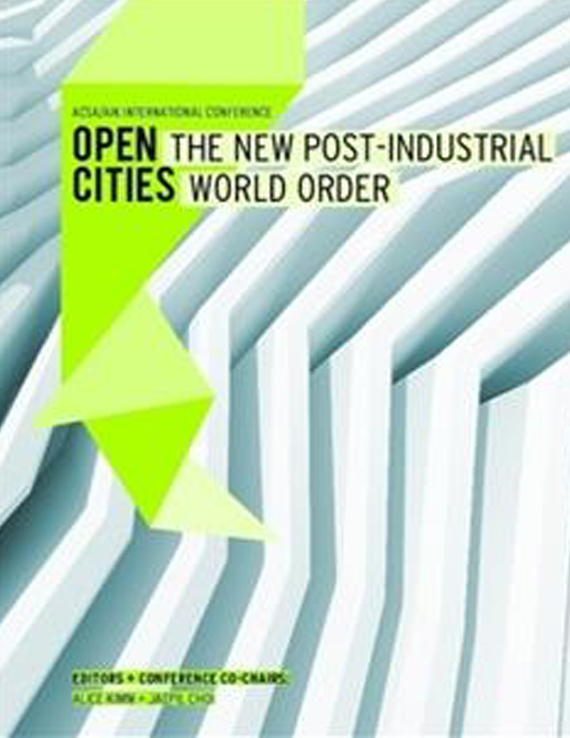Author(s): Aki Ishida
“As the most private, most vulnerable state common to all, sleep is cruciallydependent on society in order to be sustained.”- Jonathan Crary in 24/7: Late Capitalism and the Ends of SleepIn the new post-industrial cities, there is a great disconnect between our body’s circadianpacemaker which controls many of physiological and metabolic functions,including sleep, and the 24/7 lifestyle incubated by these cities. Efforts of massivescales are being made in cities such as Songdo International Business District (SIBD)of Incheon Free Economic Zone in South Korea and Suzhou Industrial Park (SIP) inChina to make the greenest possible cities through integration of open green spaces,bike lanes, and recycling programs. However, the lifestyle of service sector jobs, withincrease of overnight-shift work and the ability and desire to be in constant communicationbetween different time zones across the globe, place a great strain onhuman body’s natural inclination to maintain its circadian rhythm. In a work environmentthat operates across time zones, the temporality of our built environment is nolonger in sync with the solar cycle as those of the farmers and factory workers in thepre-Edison era; in new open cities, chronobiology of the cities is guided by the humansleep cycle that is under constant attack by our 24/7 culture.Before digital technology gave rise to the new open cities, industrial technologiesalready shifted the chronobiology of buildings. The introduction of electric lightalmost overnight changed the temporal nature of architecture by making buildingshabitable all hours of the day. Advancement in float glass manufacturing andlamination technology made maximum transparency of building skins with uninterruptedpanels of glass affordable and expected not just in corporate offices butalso in bedrooms of urban condos, penetrating light day and night into the privatedomestic spaces of sleep.The green features of LEED certified buildings may do little good for people whoare chronically sleep-deprived or are awake when their circadian clock is signalingtheir brain to sleep. Steve W. Lockley and Russell G. Foster, both neuroscientistsand experts in sleep medicine, note that night-shift workers have a great risk of accidents,injuries, and long-term diseases. Many high profile accidents occurred atnight: Exxon Valdez (midnight), Chernobyl (1:30am), and Three Mile Island (4am).The timing and quantity of sleep that in the past were regulated by the sun are nolonger present naturally in new post-industrial cities. For a city to be sustainable,its inhabitants’ sleep must be actively protected. Automated window shades anddimming of interior lights have become a standard problem-solver, and learning tochange one’s behavior to get sleep at the right time, in the right setting is anothersolution. At the same time, the skin and organs of the buildings, as well the lightsthat illuminate cities at night, could also be designed to encourage decelerationand actively engage the most important cycle controlled by the circadian pacemaker,the light-dark cycle associated with the solar system.
Volume Editors
Alice Kimm & Jaepil Choi
ISBN
978-0-935502-91-6

 Study Architecture
Study Architecture  ProPEL
ProPEL 
